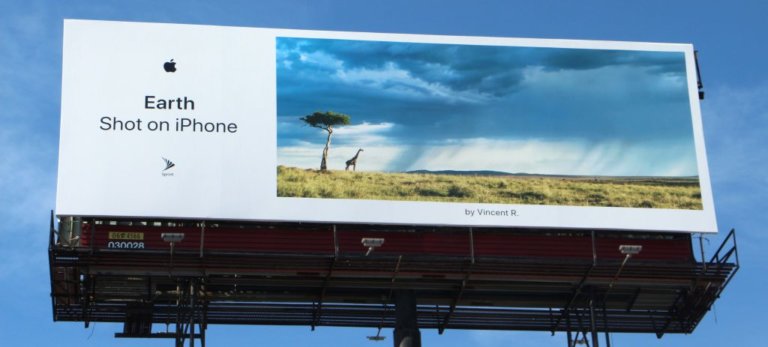
In the ever-changing world of advertising and marketing, one thing remains true – customer loyalty is key for businesses to survive. Brand loyalty and trust go hand-in-hand and are both vital components that businesses must gain in order to become a top-of-mind brand. It might sound easy, but brands often miss the mark when it comes to knowing exactly what consumers are expecting of them. The pandemic has also set the bar even higher with the societal challenges imposed on the population, which require brands to deliver even more value to consumers not only in terms of quality and service, but of the brand’s image as well. In these concerning times, advertising is one sure-fire way that brands are able to effectively communicate with consumers. In-store purchases are being restricted to essential items only and word-of-mouth is being limited, as people are staying home. Brands need advertisers to communicate to consumers in order to establish a loyal relationship. How brands market themselves says a lot about the brand’s image and ultimately impacts buying decisions. So why is Out-of-Home (OOH) the right medium to drive customer loyalty? There are several reasons that we will cover in this article, but the short answer is OOH has the ability to be creative and impactful while reaching a large audience, but most importantly, brands that advertise through OOH exert confidence in their products by letting their consumers know that they have invested time and money into their campaigns and won’t let them down.
The Importance of Customer Loyalty
With the unprecedented pandemic taking its toll on businesses today, the competition for customer loyalty has become fierce. The key to earning customer trust is by providing consistent value to consumers that they can’t get anywhere else. Brand awareness is valuable in the short run but maintaining a relationship with consumers long enough to claim that they are your loyal customers requires time and effort. Brands must know their consumers well and work towards finding ways to make a difference in their lives for the better. According to a study conducted by Nielson, brands have more responsibility to meet the demands that consumers have set in order for them to become loyal customers. Research from this study has shown that consumers care about companies who support causes that matter to them. Before the ongoing pandemic, 74% of U.S. Millennials said they were more likely to buy brands that support social issues they care about. Brands that show purpose and support causes that matter, help build good reputations that grow customer loyalty in the long-term.
With the pandemic putting constraints on consumer spending habits, sustainability has become an issue of greater importance. Brands need to communicate to consumers the sustainability of their products to show buyers that they also care about the economic challenges consumers are facing, which ultimately increases brand loyalty. According to a study by Edelman, 28% of international countries and 33% of Americans say trust is more important now than ever because they are struggling financially and cannot afford to waste any money on a bad purchase. Aside from brands delivering promising products, consumers also want to know more about the brand that they are purchasing from. According to the same study by Edelman, 69% said that the most important reason for trusting a brand is it’s impact on society, trumping customer experience, and product experience with 55% and 62% respectively. 81% of respondents claimed that the deal breaker in their buying decision is that, “They must be able to trust the brand to do what is right”. Consumers will become loyal to brands that show empathy towards their employees and prioritize brands that support fair wages and other societal responsibilities. According to the same study, respondents listed one of three societal-oriented reasons for being loyal to a brand, the most common of which is that the brand treats its employees well with 22% claiming that to be true. Brands have the opportunity to use their advertisements as the voice of their brand to tell their story and connect with their consumers, which is the most important factor in achieving brand loyalty. When consumers trust a brand they demonstrate that loyalty, which can make a marketers life much easier as consumers reward them by advocating and defending the brand. 75% of global respondents say they will continue to buy a brand they trust, even if another brand suddenly becomes trendy. They’ll also advocate on the brand’s behalf, with a large majority of people (76% globally and 78% of Americans) saying they always recommend the brand if someone asks.
Why OOH?
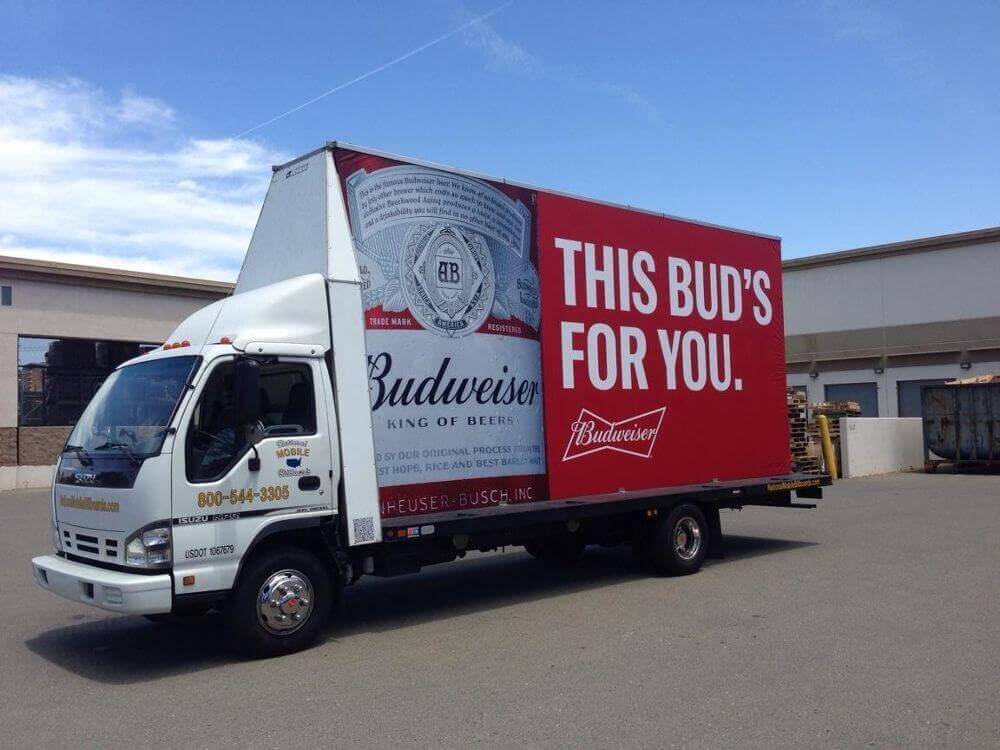
A key part in building trust is when consumers come across an ad on their own. This is something that is being lost in the midst of a pandemic as people are constantly dodging pop-up ads on every website and YouTube video they come across. OOH ads have more of a subtle way of engaging with consumers without forcing themselves onto anyone, which can create a negative reaction towards the ad and ultimately the brand. With the increase in digital usage, brands are advertising more online, putting themselves at risk of becoming too invasive. Genuine trust is gained through genuine engagement. An example of an ideal OOH medium that acts as an extension of a brand instead of a stand-alone ad, are truck-side ads. Consumers prefer ads that are less intrusive and truck-side ads are a great solution for authentic engagement. When consumers come across a truck-side ad, it may be perceived as a delivery truck for the brand which can mean a direct indication of success. Moreover, consumers are more prone to trust brands that have high sales. Truck-side ads perceived as delivery trucks gives them a sense of security that it is an established and respected company.
Another issue advertisers are facing is consumer’s demand for more transparency from businesses. This can be challenging to achieve online due to the numerous cases of fraud that are surfacing. A report by Edelman showed that the spread of fake news and false information on the internet has concerned consumers with around 42% of U.S. respondents and 36% globally listing it as an issue. Relying solely on online advertising leaves consumers questioning whether the brands they are encountering can be trusted. This is causing marketers to look for different mediums to connect with consumers, especially if their end goal is to gain loyal customers.
Additionally, brands that implement OOH in their integrated marketing plan and launch a number of campaigns over a long period of time can build a solid reputation for their brand, especially when every campaign maintains the brand’s image and resonates with targeted consumers. According to a study by Rapport, brands that dedicated 15% or more of their media budgets to OOH advertising had a 24% increase in brand trust and 106% increase in perception of brand quality. The more familiar consumers become with a brand, the more likely they will trust it. When a brand consistently produces engaging campaigns that are advertised in many locations, they start to earn validation in the minds of consumers. A brand’s ability to showcase one message with one graphic or image on a large platform makes it easier for consumers to remember when compared to a fast-talking ad displaying many messages at once. With creativity and consistency over a period of time, OOH ads can give companies an established reputation as a respected brand that consumers can trust.
Brands Using OOH to Gain Loyalty
Mcdonald’s
McDonald’s has been around for almost 70 years and has become the global symbol for American fast food restaurants. With the introduction of Ronald Mcdonald in the ’60s, Mcdonald’s has been instilling brand loyalty, especially to kids, ever since. Mcdonald’s started advertising using OOH ads with emphasis on the message of getting value with low prices and fast service. But due to their loyal customers, Mcdonald’s has now become an empire. Mcdonald’s has been using OOH for years for the purpose of immediate recognition and association that comes to mind when consumers see a golden arch and a red box of fries. The fast food giant has been so successful with this tactic that consumers can now recognize the infamous brand even without their logo present.
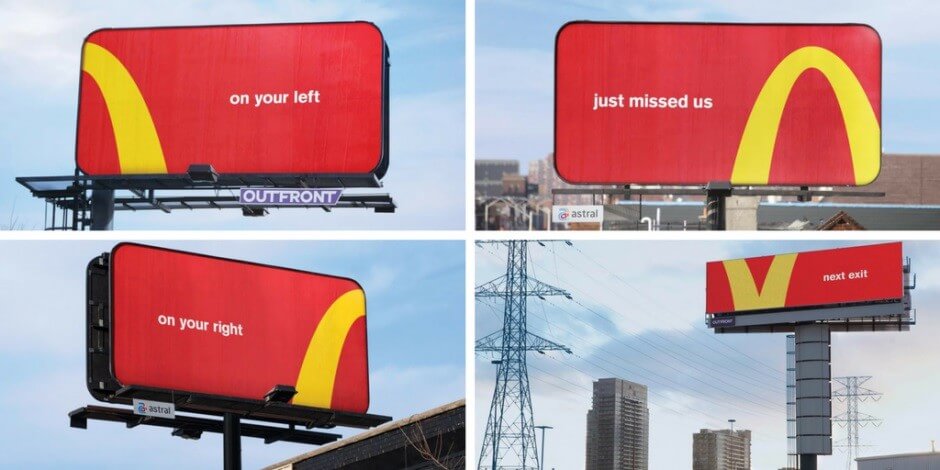
The brand made sure of that with their recent OOH campaigns that displayed incomplete images, proving the creativity that can be implemented when a brand has established loyalty. Their loyal following is what makes McDonald’s OOH advertising stand out. They’ve created a marketing scheme that’s not only recognizable by all, but has also become synonymous with comfort and familiarity to tourists and locals alike. Even with its incomparable success, Mcdonald’s continues to be a top OOH spender to maintain its status as a top-of-mind brand by investing 5.3 percent of media dollars into OOH advertising.
Nike
When it comes to achieving brand loyalty by sharing social values, nobody does it better than Nike. Nike understands what is most important to customers and connects with them using aspirational marketing. As mentioned earlier, consumers are most loyal to brands that are willing to do the right thing and support social issues that resonate with their consumers, especially millennials and GEN Z demographics. Nike is known for using its voice to boldly make statements about controversial topics through advertising. Nike’s main goal is to build a loyal following that will fight for the brand by listening to what consumers are really asking for and use their influence as an opportunity to support or participate in topics that their consumers believe in.
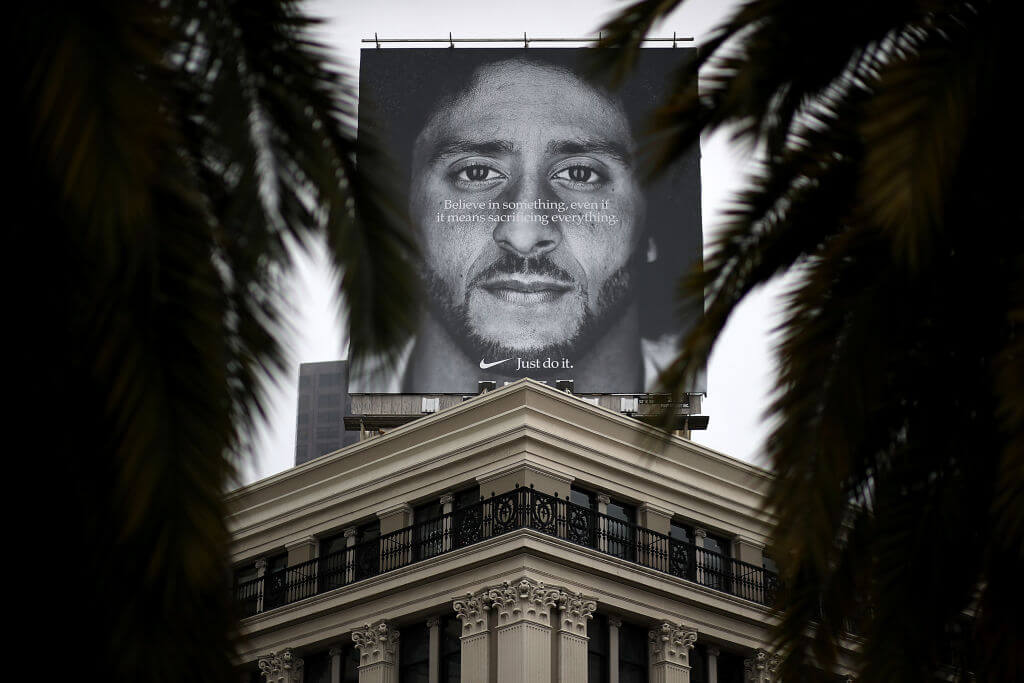
This is why Nike’s infamous ‘Dream Crazy’ campaign with Colin Kaepernick is an excellent example of how brands can take a stance on a national trending topic and use it to their advantage. Colin Kaepernick is a NFL player who refused to stand for the playing of the national anthem in protest against racial inequality and police brutality. Nike decided to create a black and white portrait of Kaepernick that read, “Believe in something, even if it means sacrificing everything”. The OOH ad was cited by the Outdoor jury as a “ winner.” Paul Nagy, CCO at VMLY&R Australia and New Zealand stated, “That one image, they’ll be teaching ten years from now, not just in marketing books, but in history books. In my opinion, it’s the greatest Nike ad of all time.” John Patroulis, the worldwide chief creative officer of Grey stated that, “Understanding the responsibility we have as an industry of being in a public space (OOH), we’re not invited in, so we felt we needed to award work that’s contributing somehow.” The judges also stated that because the image was placed on a large billboard outdoors made it feel more real, something only OOH ads can provide. Even though Nike took a risk by choosing a side and upsetting opposing Americans, it gained more than it lost. 4C Chief Marketing Officer Aaron Goldman stated that, “They are the ones Nike has decided will be its future customers, so if others are getting upset, Nike has planned for that, and it doesn’t care.” Companies like Nike, who have a loyal following, can afford to fight for what they believe in, especially if it resonates with their target audience, giving them even more of a reason to support them. Nike’s online sales actually grew 31 percent after the news broke out compared with a 17 percent gain recorded for the same period of the previous year, according to San Francisco–based Edison Trends.
Apple
Apple has managed to become a brand whose consumers feel a personal commitment to. It has created a cult-like following that has led its users to obsess about purchasing the newest products on their release date. This sounds like every brand’s dream come true, so what makes consumers so loyal to Apple? Apple brands itself by focusing on emotions – how their product experience makes you feel. Its brand personality is about lifestyle, imagination, innovation, hopes, and dreams that entice consumers to want to be a part of. Apple has also positioned itself to be perceived as a helpful brand that strives to fulfill the goals of their consumers with innovative technology. All these attributes that give Apple a personality have been molded through their advertisements.
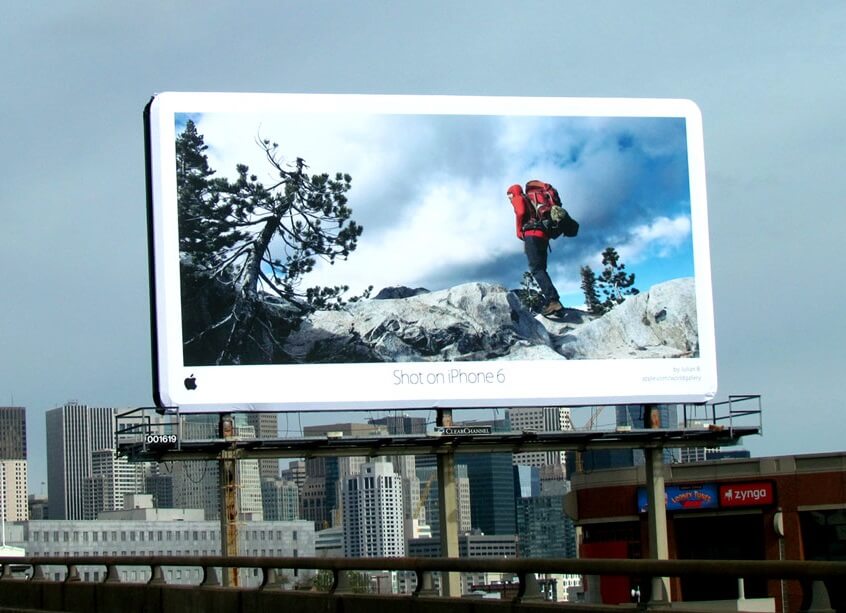
Most consumers have probably spotted one of Apple’s 10,000+ billboards across 25 countries displaying beautiful photographs shot by real people using their iPhones. The simple yet creative idea that resembles the brand’s personality and connects consumers to the brand (which mentioned earlier) is the perfect strategy to gain customer loyalty. Imagine taking a beautiful shot on your iPhone and having the chance to have it featured on a billboard for Apple. This kind of engagement sparks an array of emotions that can take an average consumer and make them a lifelong advocate.
The Bottom Line
Obtaining brand loyalty doesn’t happen overnight and providing good service and product quality just doesn’t cut it anymore. Consumers need to feel that the brands they shop from align with their core values in order for them to truly commit. With consumers quickly losing trust in online ads, OOH has proven to be a long lasting and trusted source that has a great impact on the population. Whether it’s the company’s ability to be mobile, memorable, creative, emotionally inspiring, or authentic, it captures exactly what consumers need to become a loyal customer.


